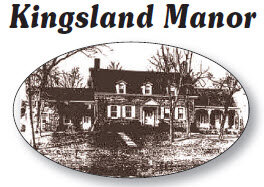A Tale of Two Instruments
In the Ballroom, we have an attractive pump organ manufactured by Mason & Hamlin that was purchased for the Kingsland Manor. Wikipedia supplies the following information about the company:
“Mason & Hamlin was founded in Boston, Massachusetts, in 1854 by Henry Mason, son of Lowell Mason, the American hymn composer and musical educator, and Emmons Hamlin, a mechanic and inventor who had worked for melodeon makers Prince & Co. in Buffalo, New York.
“They originally manufactured only melodeons, but in 1855 introduced the organ-harmonium or flat-topped cabinet organ. This design placed the bellows vertically and underneath the reeds, and served as the model for the suction operated American-style reed organ. By the early 1870s they were considered the largest and most important manufacturer of reed organs, employing about 500 and producing as many as 200 instruments a week. Mason & Hamlin supplied organs to several prominent composers, notably Franz Liszt, whose name the company applied to their patented selective sustain mechanism for organs comparable to the sostenuto in pianos.”
Based on the serial number of the organ (179134) and the style (3329), we believe that our instrument was produced in 1888 or 1889.
In the Parlor, we have a melodeon made by Carhart & Needham. The company was founded 1846 in Worcester, Massachusetts by Elias Parkman Needham and Jeremiah Carhart. In 1855, the company became Carhart, Needham & Co. with the introduction of another partner, Samuel C. Swartz, until 1865 when Samuel died. The company was again named Carhart & Needham and remained so until the death of Jeremiah Carhart in 1868, when the name was changed to E. P. Needham & Son. Based on the name plate on the case, our Carhart and Needham melodeon was built between 1865 and 1868.
Our piano-style melodeon was donated to the Trust by Mr. and Mrs. Clifford Wells of Whiting, New Jersery, in 1974.
The description entered when the melodeon was received by the Trust reads: Burled wood 45 inches wide x 31 inches high and 22-1/2 inches depth; 25 black keys; 36 white keys; legs 4 – heavy, 8-sided, tapered at bottom; foot pedals placed in wooden lyre-shaped frame.
The mechanism of a melodeon is similar to that of the Mason & Hamlin suction-operated reed organ. Air from the bellows is pulled into the organ reed and not pushed as it is in most other pump organs.
On October 12, 2003, there was a concert held in the Ballroom. The Mason & Hamlin organ and the Mathushek spinet grand piano (donated by Silas Mountsier III) were played. If anyone remembers the concert and the names of the women who played these instruments, please send us a message.




